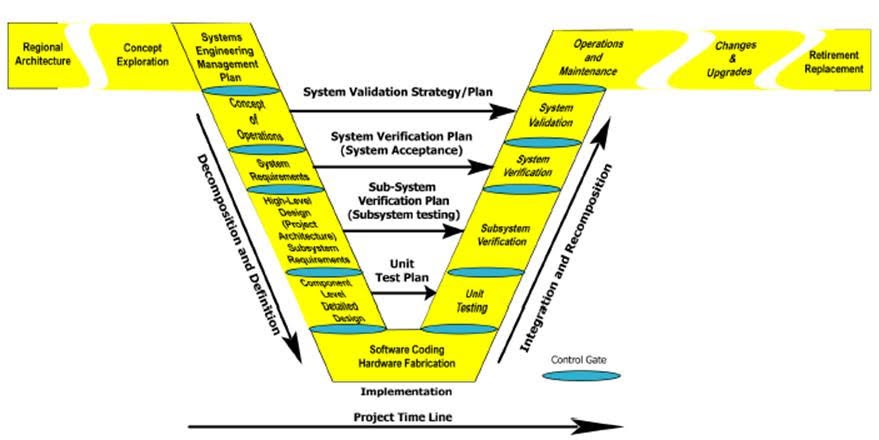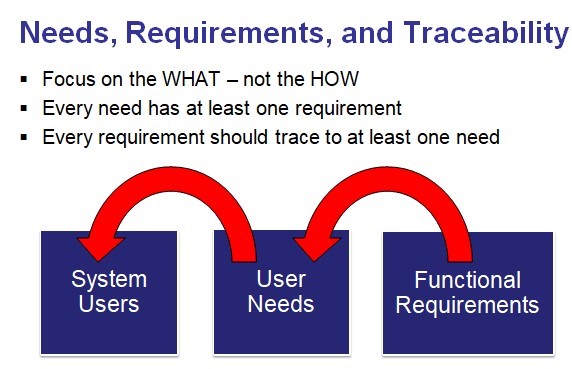A Systems Engineering Approach to Smart City Planning – Inspired by IEEE P2784 (Part 2)
Written by Jim Frazer
In last month’s article we reviewed the nine Smart City applications that are typically supported by public agencies, as well as the seven technologies that impact them. In order to query the needs of all stakeholder communities in the domains discussed last month, and to refine those needs into a comprehensive plan, let’s first examine exactly what is the systems engineering process as well as its importance to developers and operators of Smart City projects.
What is the Systems Engineering Process?
The Systems Engineering Process (SEP) is an interdisciplinary approach and means to enable the realization of successful systems. It focuses on first defining customer user needs and subsequently the required functionality early in the development cycle, documenting requirements, and then proceeding with design synthesis and system validation.

Figure 1. Systems Engineering "V" Diagram
There are multiple ways to represent the systems engineering process. One way, the Systems Engineering "V" Diagram as shown in Figure 1 above, represents the typical life cycle of any system or project. Whether the system being deployed consists of a basic computer-aided dispatch (CAD) system for a transit agency, or a more complex interface between a traffic management center and a public safety agency, all systems will follow some variation of this life cycle.
User Needs are generated through a robust examination of needs from all stakeholder communities that have an interest in the envisioned project. In the next step, each of these needs are used as a foundation in order to develop measurable unambiguous Functional Requirements. Each need must have a functional requirement and each requirement must have an underlying foundational user need. The last step in this process is to create a test plan that confirms the traceability of needs to and from their dependent requirements. Figure 2 gives an overview on the consensus-based user needs and measurable functional requirements.

Figure 2. An overview on the consensus-based user needs and measurable functional requirements
Key to the success of the SEP is the identification of consensus-based user needs and measurable functional requirements. When developing your Smart City system, the focus needs to be on “exactly what the system needs to do”, and not on the “how the system will do it”. Every user need should have at least one requirement. Every requirement should be traceable back to at least one underlying foundational user need. In the SEP process, a Traceability Matrix is used to document and verify these critical relationships. The matrix may be maintained directly in a database or spreadsheet for small projects or generated and maintained with a requirements management tool for more complex projects. Using either approach, the matrix provides backwards and forwards traceability between stakeholder needs (and other potential requirements sources), system requirements, design, implementation, and verification test cases.
Next, let’s examine the role of standards within the systems engineering process.
The Value of Technical Standards
Standards are primarily used in the design stage of the systems engineering process, after the higher level of activities, such as the user needs assessment and concept of operations have been developed. During the detailed design phase, specific messages, data elements, communications profiles, and design options are defined. It is important to also remember that standards, can also provide critical user operational needs and interface requirements during the project definition stage.
Now that we have examined the systems engineering process, let’s discuss challenges that often occur when using this approach.
Technical Challenges
Technical challenges are often more easily overcome than institutional, often additional training can be minimize or alleviate these issues.
Technical challenges include the following:
- Gaps in existing skills
- Inconsistent industry support for standards
- Conformance to standards
- Paradigm shift from non-standards based to standards based
- Paradigm shift from non-SEP based to SEP-based
Institutional Challenges
Institutional challenges often take time to overcome through perhaps employee turnover (e.g. new management open to new ideas) or the emergence of a regional champion to get agency buy-in.
Institutional challenges include the following:
- Not everyone in an agency is willing to articulate their needs
- Resistance to change
- Not all agencies have bought in to regional integration
- Paradigm shift from non-standards based to standards based
- Paradigm shift from non-SEP based to SEP-based
Reasons to Use
The top 12 reasons to use the systems engineering process for your Smart City project are given as follows:
- SEP helps define scope of Smart City projects
- SEP drives a higher level of stakeholder participation
- SEP increases the likelihood that the Smart City system meets user expectations
- SEP generates better Smart City system documentation
- SEP reduces the risk of cost and schedule overruns
- SEP minimizes defects in accepted products
- SEP drives more predictable outcomes
- SEP provides a framework and a process to verify that the Smart City system meets documented user needs
- SEP provides more adaptable, more resilient Smart City systems
- SEP verifies system functionality
- SEP allows a higher level of reuse from the original Smart City project to projects in the future
- SEP is required for access to US DOT funding – see US DOT Rule 940
In summary, SEP offers a wide variety of benefits to Smart City project stakeholders, that allow your project to comprehensively address user needs, while delivering a project on-time and on-budget.
By using the SEP in a Smart City planning, projects can be built and installed in less time, at reduced cost and with greater likelihood of successfully addressing the needs of the stakeholder communities.
This is the essence of the IEEE P2784 Guide for the Technology and Process Framework for Planning a Smart City.
This article was edited by Loi Lei Lai
To view all articles in this issue, please go to July 2022 eNewsletter. For a downloadable copy, please visit the IEEE Smart Cities Resource Center.

To have the eNewsletter delivered monthly to your inbox, join the IEEE Smart Cities Community.
Past Issues
To view archived articles, and issues, which deliver rich insight into the forces shaping the future of the smart cities. Older eNewsletter can be found here. To download full issues, visit the publications section of the IEEE Smart Cities Resource Center.



